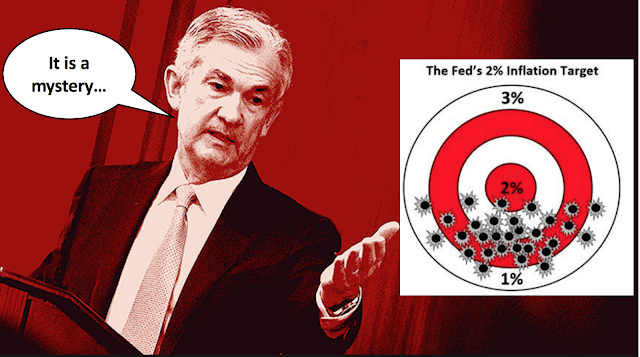Last December, I participated in an AEI event where I made the case that the Fed's current floor operating system could collapse into a corridor operating system fairly soon. My argument was that even without a significant reduction in the supply of reserves, a large shift in the demand for reserves could be sufficient to move the Fed off the perfectly elastic or 'flat' portion of the bank reserve demand curve. The Fed, in other words, could have a relatively large balance sheet and still end up in a corridor operating system.
Graphically, such a development is depicted in the figures below. The figure on the left shows a floor operating system with a large supply of reserves on the flat portion of demand curve. In this system, the IOER is both the target and overnight interest rate. The second figure on the right shows what I imagined could be happening. The demand for reserves was shifting outward because of new regulatory requirements and the supply of reserves was shifting inward as the Fed began shrinking its balance sheet. As depicted, these actions together would push the Fed off the flat portion of the reserve demand curve. In turn, this would cause overnight rates to rise above the IOER and end the Fed's floor system.
When I brought this up late last year it was pure speculation on my part, but it was informed by the Senior Financial Officer Survey and the Fed's balance sheet reduction plans. In my AEI talk, I told George Selgin, who dislikes the floor system, that if this comes to fruition Christmas will come early for him.
Well, Christmas did not come early for poor George. He may, however, get a late gift from Santa Claus as there is some evidence my prediction may be coming true. Jeff Cox reports that interbank interest rates are rising above the IOER rate. The figure below shows the overnight bank financing rate (OBFR), the new and improved interbank interest rate measure, has started rising above the IOER. The old federal funds rate (FFR) has been above the IOER for almost a month. (The closely-related overnight Libor replacement, the Secured Overnight Funding Rate (SOFR) tells a similar story.)
To be clear, this move is small from a broader perspective as seen below. Nonetheless, this rise in both series is part of a longer-term change in their trend, where previously they were consistently below the IOER but now are bouncing above it. If they continue to rise above the IOER, the floor system's days are numbered.
A similar story emerges if we look to the overnight treasury repo rates. The DTCC treasury repo rate has been tending up over the past month and so has the BNY Mellon treasury repo rate.
Now the DTCC repo rate has been above the IOER for awhile, but the BNY repo rate has not. This is relatively new. And like the interbank rates, the repo rates collectively have been gone from trending below the IOER to bouncing above it as seen below. Again, if this upward movement is sustained the floor system will fold.
Now, with all that said, there is something of a puzzle here: there has been no revival in interbank lending. One would expect, all else equal, that a rise in interbank interest rates above the IOER to spark some interbank lending. Instead, it appears interbank lending has been flat to declining:
One possible resolution to this puzzle is that banks are lending to the overnight treasury repo market rather than to each other. The overnight yield is slightly higher in this market and according to the Fed's H8 database there has been an explosion of reverse repo activity as seen below.
Maybe part of the new normal is that the treasury repo market has permanently displaced interbank lending. In any event, these developments all point to some big changes taking place that could force the Fed back to a corridor system.
If that is the case, I would recommend the Fed get ahead of this transition and intentionally guide itself to a symmetric floor system like the one in Canada. In my next post, I will offer some practical suggestions for making this journey.
P.S. The technical definition for the "federal funds sold and reverse repos" in the H8 database is as follows: "Includes total federal funds sold to, and reverse RPs with, commercial banks, brokers and dealers, and others, including the Federal Home Loan Banks (FHLB)." So maybe part of the explanation for the lack of interbank lending is that bank are lending indirectly to each other via the repo market.
P.S. The technical definition for the "federal funds sold and reverse repos" in the H8 database is as follows: "Includes total federal funds sold to, and reverse RPs with, commercial banks, brokers and dealers, and others, including the Federal Home Loan Banks (FHLB)." So maybe part of the explanation for the lack of interbank lending is that bank are lending indirectly to each other via the repo market.











